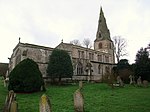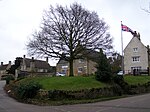Seaton Meadows
Sites of Special Scientific Interest in Rutland

Seaton Meadows is an 11.4-hectare (28-acre) biological Site of Special Scientific Interest east of Seaton in Rutland. It is owned and managed by Plantlife.This site is traditionally managed as hay pasture, and it is an example of unimproved alluvial flood meadows, a rare habitat due to agricultural developments. The grasses are diverse, including meadow foxtail, red fescue, sweet vernal grass and Yorkshire fog.There is access from the B672 road.
Excerpt from the Wikipedia article Seaton Meadows (License: CC BY-SA 3.0, Authors, Images).Seaton Meadows
Seaton Road,
Geographical coordinates (GPS) Address Nearby Places Show on map
Geographical coordinates (GPS)
| Latitude | Longitude |
|---|---|
| N 52.571 ° | E -0.651 ° |
Address
Seaton Road
Seaton Road
LE15 9HZ , Harringworth
England, United Kingdom
Open on Google Maps








